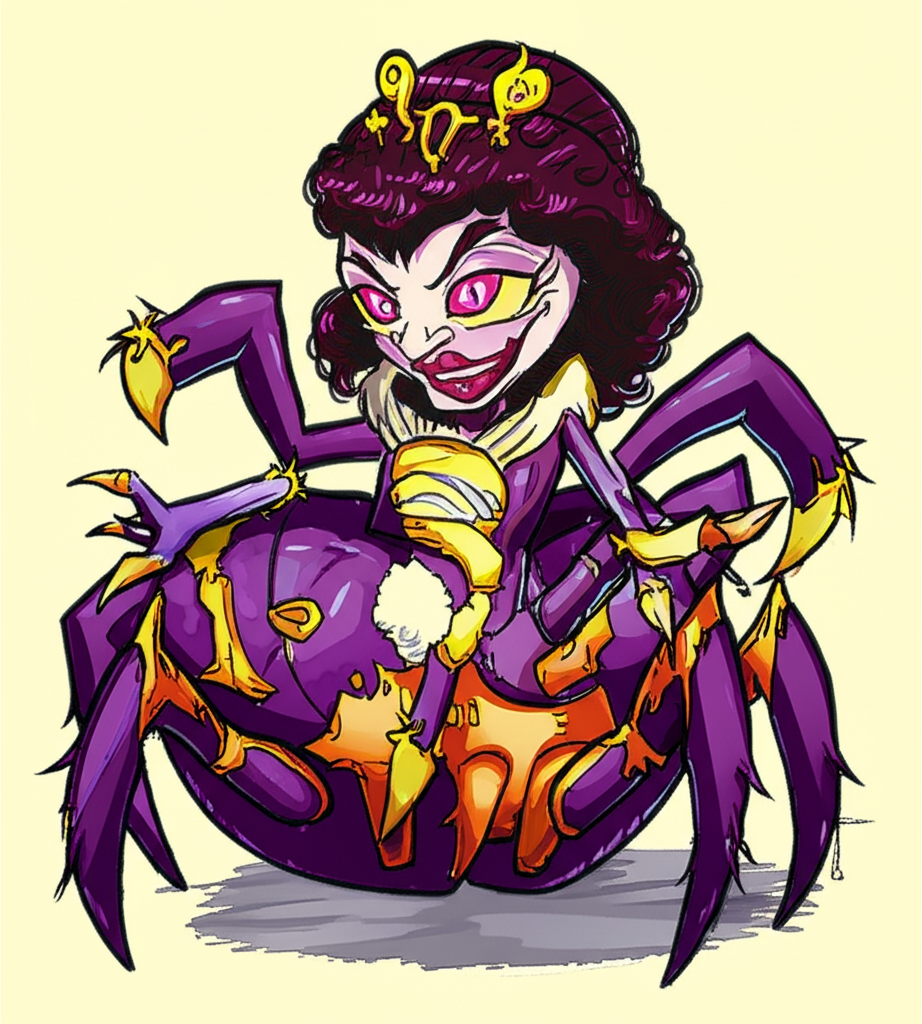
Introduction
This is a story from the rich tapestry of Japanese folklore, a traditional tale spun from the imaginations of ancient people. It is not a tale of verifiable events, nor is it a testament to any divine power other than that of the human capacity for storytelling. It is a story, passed down through generations, meant to entertain, to teach, and to reflect the world as it was understood in a bygone era. We approach this narrative with respect for the cultural heritage it represents, recognizing its place within the vast landscape of human imagination. The myth of the Jorogumo, a spider-woman of captivating beauty and deadly intent, is a fascinating glimpse into the beliefs and fears of a historical society.
Origins and Cultural Background
The myth of the Jorogumo finds its roots in the Edo period (1603-1868) of Japan, a time of relative peace and prosperity following centuries of warfare. This was a society deeply steeped in tradition, where Shinto and Buddhist beliefs intertwined, shaping the worldview of the populace. The natural world was seen as imbued with spirits, kami, residing in mountains, rivers, trees, and animals. The unseen world of spirits and demons, yokai, was as real to them as the tangible realm. These yokai, both benevolent and malevolent, were believed to influence daily life, from the success of a harvest to the health of a family.
The Edo period witnessed a flourishing of artistic expression, particularly in the form of woodblock prints, ukiyo-e, and kabuki theater. These art forms often depicted the yokai, bringing them to life in vibrant colors and dramatic narratives. Fear of the unknown, respect for the power of nature, and the dangers of temptation were common themes explored in these artistic expressions. The Jorogumo, with her seductive allure and deadly nature, perfectly embodied these anxieties and served as a cautionary tale.
Character / Creature Description
The Jorogumo is a creature of striking duality. She is typically depicted as a beautiful woman, often appearing in the guise of a seductive courtesan or a refined noblewoman. Her beauty is often said to be mesmerizing, capable of ensnaring the hearts and minds of unsuspecting men. However, her true nature lies hidden beneath this alluring façade. The lower half of her body is that of a giant spider, a creature that has long been associated with darkness, danger, and the hidden places of the world.
The spider’s attributes are symbolically potent. Spiders are known for their intricate webs, representing entrapment and the unseen threads that connect us to fate. Their venomous bite speaks of the swift and final nature of death. The Jorogumo’s combination of human and arachnid form symbolizes the deceptive nature of appearances, the dangers of lust, and the ever-present threat of the unknown. Her strength and cunning are also representative of the natural world, a force to be reckoned with.
Main Story / Narrative Retelling
The tale of the Jorogumo often begins in a secluded location, a place of mystery and shadow. This could be a lonely bridge, a hidden cave, or the depths of a dark forest. It is here that the Jorogumo makes her lair, patiently waiting for her victims.
One popular version tells of a handsome samurai, weary from his travels, who stumbles upon a deserted teahouse. Exhausted, he seeks refuge within, drawn by the gentle glow of lanterns and the promise of warmth. He is greeted by a beautiful woman, the Jorogumo in disguise. Her voice is soft, her eyes full of a captivating allure. She offers him sake, a sweet, intoxicating drink, and they begin to converse. He is completely enchanted, oblivious to the danger that lurks beneath the surface.
As the night deepens, the samurai notices subtle changes in the woman’s appearance. Her skin seems to shimmer with an unnatural sheen, her eyes grow larger and darker, and a subtle clicking sound emanates from her direction. The air grows thick, filled with an unseen tension. He realizes, with a growing horror, that he is trapped. The Jorogumo, no longer concealing her true form, reveals the lower half of her body – the grotesque, hairy legs and abdomen of a colossal spider.
The samurai, paralyzed with fear, tries to escape. But it is too late. The Jorogumo has woven a sticky web, a silken prison that binds him. She approaches him slowly, her mandibles gleaming in the dim light. She wraps him in silken threads, and he is pulled into her nest. He is consumed, another victim of her insatiable hunger.
Other variations of the tale portray the Jorogumo as a guardian of a specific location, a bridge, a cave, or a secluded waterfall. She might lure travelers across her bridge, only to ensnare them with her web. Or she may be protecting a valuable treasure, claiming the lives of those who attempt to steal it. In all these stories, the Jorogumo represents a force of nature, a cunning predator, and a symbol of the dangers of unchecked desires.
Symbolism and Meaning
The Jorogumo serves as a powerful symbol on multiple levels. She represents the seductive allure of temptation and the perils of succumbing to one’s desires. The samurai, often depicted as a man of honor and strength, is brought low by his weakness for beauty and pleasure. The story warns against the dangers of vanity, lust, and greed.
Furthermore, the Jorogumo embodies the fear of the unknown and the power of the natural world. Spiders, with their stealthy movements and venomous bites, are creatures that evoke both fascination and fear. The Jorogumo combines these traits, representing the unpredictable forces of nature and the hidden dangers that lurk in the shadows.
The story could also be interpreted as a reflection of societal anxieties. The Edo period was marked by strict social hierarchies and gender roles. The Jorogumo, a female figure who defies these norms, could be seen as a representation of female power and the potential threat it posed to the established order. She controlled her domain, chose her victims, and dominated through her cunning and strength.
Modern Perspective
The myth of the Jorogumo continues to resonate in modern times. She has found her way into various forms of popular culture, from literature and anime to video games and film. In modern interpretations, she is often depicted as a complex character, a product of her environment, or a misunderstood creature.
In some adaptations, the Jorogumo is presented as a tragic figure, a lonely being forced to survive in a harsh world. Her actions are explained by her hunger, her isolation, or her desire for companionship. Other versions explore her motivations, delving into her history and providing insights into her true nature. These interpretations reflect a modern fascination with exploring the complexities of human nature, even within the context of mythological beings.
The Jorogumo‘s enduring appeal also stems from her striking visual design. Her combination of beauty and terror makes her a compelling character for artists and designers. Her image has been adapted into countless forms, each interpretation reflecting the artist’s own perspective on the myth.
Conclusion
The story of the Jorogumo is a captivating example of the rich storytelling tradition of Japan. It offers a glimpse into the beliefs, fears, and values of a bygone era. It serves as a reminder of the power of imagination and the enduring appeal of myth. This is a story of cultural significance, not a belief system to be embraced.
As Muslims, we acknowledge that Allah (God) is the sole Creator and Sustainer of all things. We recognize the beauty of human storytelling and cultural heritage while firmly adhering to the principles of Islam. The Jorogumo, like other figures of folklore, reminds us of the power of the human imagination and the timeless nature of storytelling. It is a testament to the human capacity to create narratives that reflect our deepest fears, our highest aspirations, and our ongoing search for meaning in the world.





